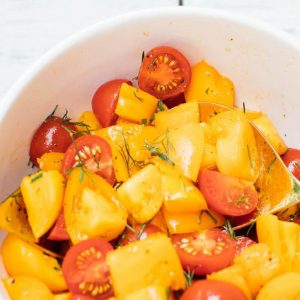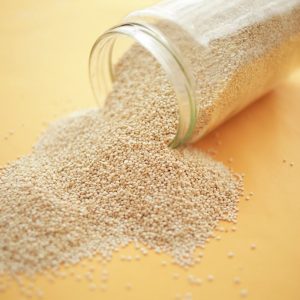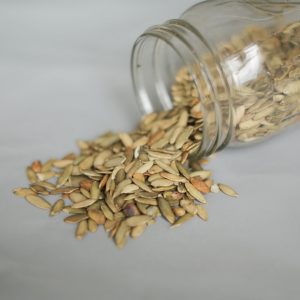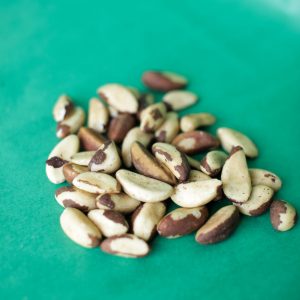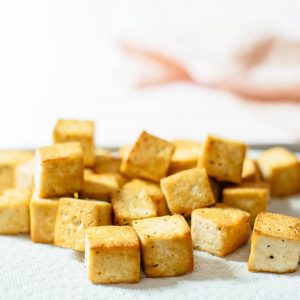Amaranth is a gluten-free grain packed with nutrients, and it’s technically a seed!
Amaranth is an incredibly small seed (about the size of the tip of a pen or pencil) and is yellow in color. It’s full of fiber and protein while lower in carbohydrates than most grains. Amaranth also contains higher amounts of lysine, which is an essential amino acid that is typically found in lower amounts in plant-based proteins.
Health Benefits of Amaranth:
Amaranth is rich in the amino acid (building blocks of protein) lysine in comparison to other grains. Lysine is an amino acid important in growth where it converts to carnitine, which helps break down fatty acids into energy. It also plays a key role in maintaining healthy cholesterol levels, helps the body absorb calcium and supports collagen growth.
Nutrient Breakdown of Amaranth:
*Per 1 cup
- Protein | 9g
- Fiber | 6g
- B Vitamins | folate and B6
- Calcium | 12% DV
- Iron | 40% DV
- Phosphorus | 36% DV
- Potassium | 9% DV
- Zinc | 14% DV
- Copper | 18% DV
- Manganese | 105% DV
- Selenium | 19% DV
How To Use:
Amaranth is great to use for a healthier version of cream of wheat or grits. Due to the fact that amaranth is a very small seed, after it’s cooked it resembles the texture of grits. Each amaranth seed melts together to form a chewy, textured mixture and the seeds are not able to be individually picked apart.
Amaranth is great to use in sweet porridges for a hearty breakfast or soups as a thickener. It can also be popped similarly to popcorn and used in granolas or bars. Amaranth can even be used as a simple side dish with roasted veggies and protein!
Recipes:
Cinnamon Apple & Pear Amaranth Porridge
NS Recommends:
When cooking amaranth, use 3 cups water per 1 cup amaranth. First boil water, then add amaranth and simmer with the lid on for 20 minutes until soft. Follow by fluffing with a fork.
You always have the option to cook longer and add more water to develop a grit-like texture.
If you’re looking for the popped option, you can add dry amaranth to a large pot and stir continuously until all of the amaranth has popped. Be careful; it burns quickly!






















